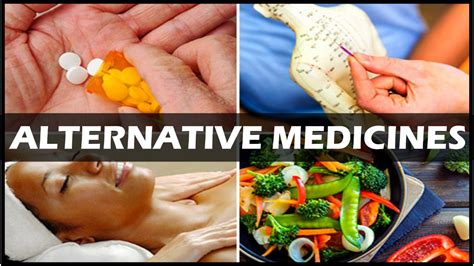 One definition of alternative medicine is medicine that is not supported by good enough evidence to have earned a place in mainstream medicine.
One definition of alternative medicine is medicine that is not supported by good enough evidence to have earned a place in mainstream medicine.
Alternative medicine embrac es many things: treatments that have never been tested or have not been adequately tested, treatments that have been tested and shown not to work, treatments that are based on nonexistent fantasies like human energy fields and acupoints, treatments like homeopathy that if true would violate established scientific knowledge, and treatments that have been proven to work but that mainstream doctors have good reasons not to recommend.
es many things: treatments that have never been tested or have not been adequately tested, treatments that have been tested and shown not to work, treatments that are based on nonexistent fantasies like human energy fields and acupoints, treatments like homeopathy that if true would violate established scientific knowledge, and treatments that have been proven to work but that mainstream doctors have good reasons not to recommend.
Some examples of those reasons:
- Tai chi has been proven to reduce falls in the elderly, but other more conventional treatments might be more suitable, cheaper, or more available.
- Kava has been proven to reduce anxiety, but it appears to be toxic to the liver and has been banned in many countries.
- Garlic has been proven to reduce blood pressure and cholesterol, but the effect is too small to be clinically significant, and we have drugs that are more effective and safer.
- St. John’s wort is an effective antidepressant, but products on the market are highly variable, may not contain what the label says, and may not have enough of the active ingredient.
- Red yeast rice lowers cholesterol. Of course it does, because it contains the same active ingredient as the prescription drug lovastatin. But it also contains a lot of other stuff that isn’t needed and might be harmful. The prescription drug is standardized, regulated, contains precise amounts, is less expensive, is covered by insurance, and there is an effective system in place to monitor it for side effects.
- Chewing willow bark relieves headaches; but aspirin works better, is readily available, well regulated, and inexpensive. Why would anyone choose bark over pills and accept an unknown dose of a less effective painkiller?
Standardization is lacking in the herbal medicine marketplace, and many products have been found contaminated with everything from prescription drugs to carcinogens to insect parts and floor sweepings.
Complementary and Alternative Medicine and science
In his book "Snake Oil Science", research methodologist R. Barker Bausell wrote:
“CAM therapists simply do not value (and most, in my experience, do not understand) the scientific process.”
They are satisfied with anecdotal evidence and don’t understand the need for rigorous testing. When patients report feeling better, that reinforces their beliefs and is all the evidence they want. When they try to do science, they tend not to do it right.
Writing in The Spectator, Edzard Ernst said, “I have been in this business for a very long time now, I have published more papers on alternative medicine than any other researcher on this planet — and yet, I have never come across an alternative therapy that clearly and demonstrably out-performs conventional medicine.”
When they are criticized for not having good scientific evidence to support what they are doing, alternative medicine practitioners realize that while science is not important to them, it is important to others; so they naturally want to persuade others that their treatments are backed by science. They demonstrate science envy. They are science wannabes. They say, “But we are scientific too; here’s the proof.” Their protestations don’t hold up to scrutiny, but they are a source of amusement to good scientists and critical thinkers.
Naturopathy and Science Envy
Researchers at Southern Cross Unive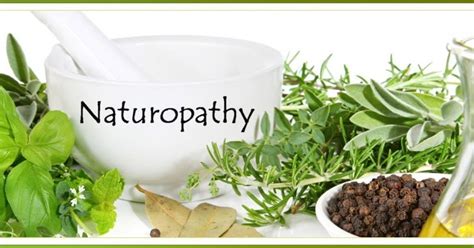 rsity in Australia were alarmed when a government review found no clear evidence demonstrating the efficacy of many natural therapies and proposed to stop funding them. So Southern Cross did their own review of the literature on naturopathy, analyzed 33 studies, and claimed to have found evidence that naturopathic medicine works for a wide range of chronic conditions. Professor Stephen Myers said,
rsity in Australia were alarmed when a government review found no clear evidence demonstrating the efficacy of many natural therapies and proposed to stop funding them. So Southern Cross did their own review of the literature on naturopathy, analyzed 33 studies, and claimed to have found evidence that naturopathic medicine works for a wide range of chronic conditions. Professor Stephen Myers said,
“We discovered there’s a body of evidence that shows naturopathic medicines are effective for a range of cardiovascular diseases, lowering blood pressure, changing cholesterol levels, musculoskeletal pain, polycystic ovarian syndrome, anxiety, depression and a wide range of chronic conditions including things like hepatitis c…We looked at the research that had been done on whole-of-practice naturopathic medicine and not isolated tools of trade. We weren’t interested in just herbal medicine alone or nutritional supplements alone, we’re interested in this concept called whole system or multi-modality practice.”
Dr. John Dwyer, Emeritus Professor of Medicine at the University of New South Wales and the founding president of Friends of Science in Medicine, questioned the study’s definition of naturopathy and said the study damaged the reputation of Southern Cross University. The lifestyle changes naturopaths recommend are not specific to naturopathy but are the same ones mainstream health care professionals recommend. If they work, that’s not evidence that naturopathy works.
The study was published in what David Gorski has called a pseudomedical journal, The Journal of Alternative and Complementary Medicine (JCAM), edited by John Weeks. Weeks is a long-time cheerleader for alternative medicine who is neither a scientist nor a physician. Dr. Gorski eviscerated naturopathy’s claim to be science-based. He said, “Science. You keep using that word. I do not think it means what you think it means. I also can’t help but be amused at how quacks are so desperate to adopt the term “science-based.” Let’s just put it this way. If your “profession” embraces homeopathy, it can never be described as science-based. Ever.”
Gorski pointed out that the studies they analyzed were at high risk of bias and were not double-blinded. Only one was randomized. The best evidence they could come up with was GIGO (garbage in/garbage out). They made grandiose claims for studies that were mostly crap.
Dr. Gorski’s conclusion: “Of course naturopathy can tart itself up with science all it likes, but as long as it continues to embrace vitalism, homeopathy, and all manner of quackery, it will never be science based, no matter how much Mr. Weeks believes otherwise.”
Homeopathy and Science Envy
 Homeopathy is arguably the most unscientific alternative medicine. It postulates that a remedy becomes more effective when the active ingredient has been diluted out of existence. It has been tested and shown not to work, and from what we know about physics, chemistry, and biology, it could not possibly work as intended. Yet it tries to defend itself with poor science and historical evidence. Homeopaths love to cite statistics from nineteenth-century cholera and typhoid epidemics where patients treated with homeopathy were more likely to survive than patients treated with conventional medicine. Those historical successes are easily explained. Doctors of the time were using remedies that often actively caused harm, but homeopathic remedies did nothing so of course the results were better. Homeopathy was just a way of avoiding iatrogenic harm. Today’s conventional medicine is much safer and more effective.
Homeopathy is arguably the most unscientific alternative medicine. It postulates that a remedy becomes more effective when the active ingredient has been diluted out of existence. It has been tested and shown not to work, and from what we know about physics, chemistry, and biology, it could not possibly work as intended. Yet it tries to defend itself with poor science and historical evidence. Homeopaths love to cite statistics from nineteenth-century cholera and typhoid epidemics where patients treated with homeopathy were more likely to survive than patients treated with conventional medicine. Those historical successes are easily explained. Doctors of the time were using remedies that often actively caused harm, but homeopathic remedies did nothing so of course the results were better. Homeopathy was just a way of avoiding iatrogenic harm. Today’s conventional medicine is much safer and more effective.
Sure, you can find positive trials of homeopathy, but the effects are inconsistent and small in magnitude, and the research designs are flawed. The body of evidence as a whole is resoundingly negative. Homeopathy is not scientific: it doesn’t work and couldn’t possibly work. Nevertheless, they keep trying to explain howwater might retain memories without ever establishing that it does, and without explaining how such memories could affect health.
Chiropractic and Science Envy
 Chiropractic was invented by a grocer and “magnetic healer” in 1895. For well over a century, it has been trying to establish scientific respectability and has failed. A group of chiropractors has even established that the core chiropractic concept of “subluxation” has no valid clinical applicability. When Simon Singh was sued for libel by the British Chiropractic Association for saying chiropractic treatments for certain childhood ailments were bogus, the BCA produced their scientific evidence: a list of 29 studies. Steven Novella evaluated those studies. He found that 12 were irrelevant and the other 17 were poor quality, cherry picked, and implausible. The BCA omitted better designed studies with negative outcomes. A typical study found that chiropractic doesn’t work for colic but parents reported that it does. That’s not scientific evidence of effectiveness.
Chiropractic was invented by a grocer and “magnetic healer” in 1895. For well over a century, it has been trying to establish scientific respectability and has failed. A group of chiropractors has even established that the core chiropractic concept of “subluxation” has no valid clinical applicability. When Simon Singh was sued for libel by the British Chiropractic Association for saying chiropractic treatments for certain childhood ailments were bogus, the BCA produced their scientific evidence: a list of 29 studies. Steven Novella evaluated those studies. He found that 12 were irrelevant and the other 17 were poor quality, cherry picked, and implausible. The BCA omitted better designed studies with negative outcomes. A typical study found that chiropractic doesn’t work for colic but parents reported that it does. That’s not scientific evidence of effectiveness.
The quality of chiropractic research is abysmal. I once reviewed their “top ten chiropractic studies of 2013.” I found small studies with no control group, negative results, evidence of bias, poor research design, questionable clinical relevance, and junk science. And these were the best studies chiropractors could find to brag about!
Acupuncture and Science Envy
 Acupuncture has been studied up the ying-yang (pun intended) for decades. A rigorous evaluation of the evidence by Steven Novella and David Colquhoun concluded that acupuncture is a theatrical placebo. They said the most parsimonious explanation for the positive studies is bias and noise in the data: the positive studies are likely false positives. They commented: “Since it has proved impossible to find consistent evidence after more than 3000 trials, it is time to give up.”
Acupuncture has been studied up the ying-yang (pun intended) for decades. A rigorous evaluation of the evidence by Steven Novella and David Colquhoun concluded that acupuncture is a theatrical placebo. They said the most parsimonious explanation for the positive studies is bias and noise in the data: the positive studies are likely false positives. They commented: “Since it has proved impossible to find consistent evidence after more than 3000 trials, it is time to give up.”
But acupuncturists keep doing poorly designed studies that prove nothing. They are determined to torture science until they can make it confess that their beliefs are correct.
I angered one acupuncturist by saying there was no good evidence, and he set out to find the evidence and prove me wrong. Instead, he proved himself wrong and quit acupuncture. I admire him: how many people are capable of renouncing their occupation when confronted with uncomfortable facts?
Energy medicine and science envy
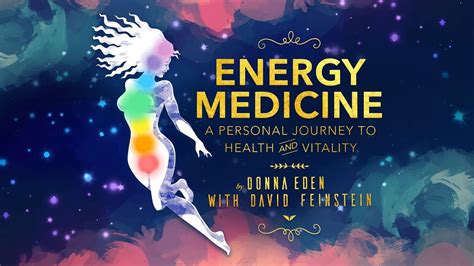 Energy medicine covers a lot of territory, including Reiki, distant healing, faith healing, bioresonance therapy, and therapeutic touch. These disparate practices are united by belief in an undetectable human energy field or other force. Pseudophysics and quantum theory are invoked to explain their mysterious actions, but explanation is useless unless the actions can be proven to exist. As a schoolgirl, Emily Rosa demonstrated with a simple experiment that therapeutic touch practitioners can’t do what they think they can; they can’t even detect the presence of a human energy field.
Energy medicine covers a lot of territory, including Reiki, distant healing, faith healing, bioresonance therapy, and therapeutic touch. These disparate practices are united by belief in an undetectable human energy field or other force. Pseudophysics and quantum theory are invoked to explain their mysterious actions, but explanation is useless unless the actions can be proven to exist. As a schoolgirl, Emily Rosa demonstrated with a simple experiment that therapeutic touch practitioners can’t do what they think they can; they can’t even detect the presence of a human energy field.
Analogy with penis envy
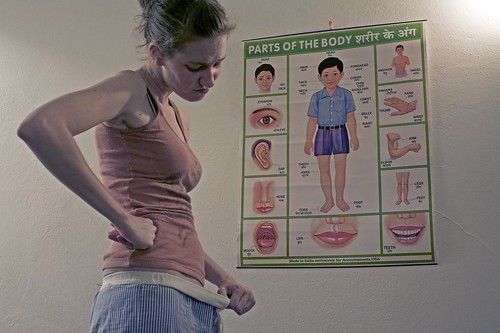 Freud’s theory of penis envy was never widely accepted. He thought females who lacked male organs envied them. It never rang true for me. I never wished for the actual male organs; in fact, I thought those dangly bits might be rather inconvenient. What I did envy was the societal prestige and power that males seemed to enjoy. Similarly, alternative medicine envies the prestige and power that good scientific evidence lends to therapeutic claims. That doesn’t necessarily mean they want to do good science or even understand what it is, much less know how to do it. If they really understood science, they probably wouldn’t have become involved with alternative medicine in the first place. Science is the only reliable method for understanding reality; I wish they would embrace it, not envy it.
Freud’s theory of penis envy was never widely accepted. He thought females who lacked male organs envied them. It never rang true for me. I never wished for the actual male organs; in fact, I thought those dangly bits might be rather inconvenient. What I did envy was the societal prestige and power that males seemed to enjoy. Similarly, alternative medicine envies the prestige and power that good scientific evidence lends to therapeutic claims. That doesn’t necessarily mean they want to do good science or even understand what it is, much less know how to do it. If they really understood science, they probably wouldn’t have become involved with alternative medicine in the first place. Science is the only reliable method for understanding reality; I wish they would embrace it, not envy it.
This article was originally published as a Reality Is the Best Medicine column in Skeptical Inquirer
Harriet A. Hall, MD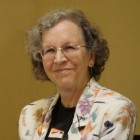 is a contributing editor to both Skeptic magazine and the Skeptical Inquirer. She is a weekly contributor to the Science-Based Medicine Blog and is one of its editors. She has also contributed to Quackwatch and to a number of other respected journals and publications. She is the author of Women Aren’t Supposed to Fly: The Memoirs of a Female Flight Surgeon and co-author of the textbook, Consumer Health: A Guide to Intelligent Decisions.
is a contributing editor to both Skeptic magazine and the Skeptical Inquirer. She is a weekly contributor to the Science-Based Medicine Blog and is one of its editors. She has also contributed to Quackwatch and to a number of other respected journals and publications. She is the author of Women Aren’t Supposed to Fly: The Memoirs of a Female Flight Surgeon and co-author of the textbook, Consumer Health: A Guide to Intelligent Decisions.